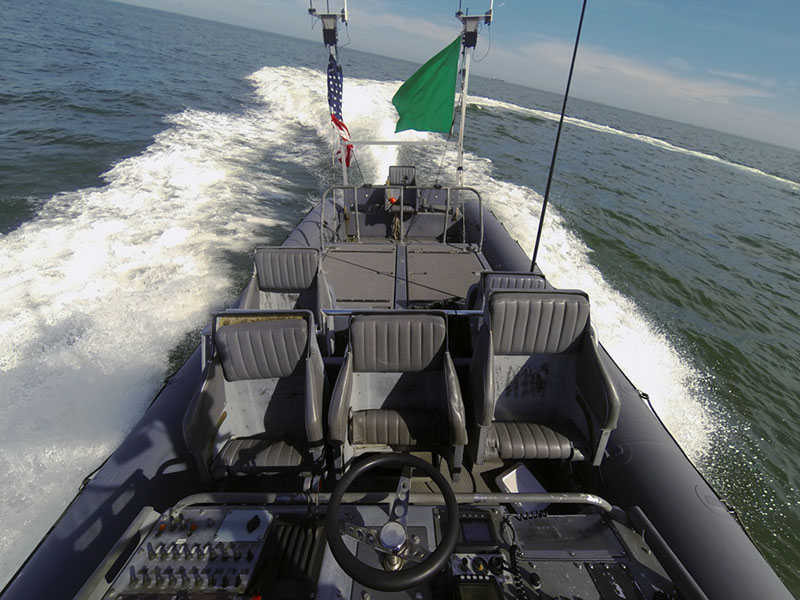Best Of 2016: The Next War
Posted on
What will the next war look like? Robots, lasers, hypersonic missiles, and stealth aircraft figure prominently, but what matters most isn’t the technology: It’s the concepts of operation that bring them all together — just as the German blitzkrieg combined tanks, aircraft, and the radio, or the Japanese at Pearl Harbor combined aircraft and ships.… Keep reading →
Best Of 2016: Rise Of The Robots
Posted on
How does war change when your weapons can think? Do you trust a computer to decide when and whom to kill? Questions once asked only in science fiction are now becoming matters for policymakers. All four armed services are experimenting with artificial intelligence in every domain: land, sea, air, outer space, cyberspace, and the all-pervasive… Keep reading →
Swarm 2: The Navy’s Robotic Hive Mind
Posted on
Robot boats are getting smarter fast. Two years ago, on the James River, the Office of Naval Research dropped jaws with a “swarm” of 13 unmanned craft that could detect threats and react to them without human intervention. This fall, on the Chesapeake Bay, ONR tested ro-boats with dramatically upgraded software. The Navy called this… Keep reading →
A Bridgehead Too Far? CSBA’s Aggressive, Risky Strategy For Marines
Posted on
UPDATED with Brig. Gen. Turner remarks on the report WASHINGTON: Marines are famously aggressive, but a new battle plan from a leading thinktank makes Iwo Jima look low-risk. The Center for Strategic & Budgetary Assessments’ proposed concept of operations is imaginative, exciting and more than a little scary: In a future war, rather than stay far… Keep reading →
The Next War? Trench Warfare With Smart Bombs
Posted on
WASHINGTON: If you want a glimpse of future war, look back a hundred years to the bloody stalemate of the Somme, the cataclysmic battle of World War I. Instead of machineguns and artillery slaughtering soldiers in no man’s land, imagine smart weapons ravaging the air, land and sea. Instead of biplanes overhead, imagine swarming drones. Instead… Keep reading →
US, UK Do ‘Groundbreaking’ Drone Exercise Off Scotland
Posted on
The multinational Unmanned Warrior exercise off the coast of Scotland is doing “really groundbreaking” work on naval drones, said one participating US scientist. There’ve been “a number of world firsts” in networking unmanned vehicles of different types and from different nations into a single unit, Marcus Tepaske, science advisor for the Office of Naval Research,… Keep reading →
Arsenal Plane Pick Still In The Air: SCO’s Roper
Posted on
DARPA HQ, ARLINGTON, Va.: Reporters must stop asking Will Roper about the Arsenal Plane, because he hasn’t picked which aircraft will be rebuilt as a high-tech truck for long-range missiles and other weapons. Speculation has centered on the Air Force B-52, but the Strategic Capabilities Office director made clear that choice is, well, up in the… Keep reading →
First Osprey Flight With Critical 3D Printed Part
Posted on
It’s one small part for an aircraft engine, one giant leap for 3D printing. The Navy has announced a Marine MV-22 made the sea services’ first successful flight with a “flight critical” component built by additive manufacturing. Specifically, in the test at Patuxent River Naval Air Station, the Osprey’s engine nacelle contained a 3D printed titanium link, small… Keep reading →
Google Cars, Pokemon Go, & The Future Of War: Roper Interview Part II
Posted on
William Roper is “buying time” for the rest of the Pentagon, he told us in a rare interview. His Strategic Capabilities Office finds near-term but game-changing upgrades for existing weapons systems, preserving American advantage over rapidly advancing adversaries while DARPA and Defense Department labs develop a new generation of breakthroughs. Yesterday, we wrote about Roper’s… Keep reading →
Strategic Capabilities Office Is ‘Buying Time’ For Offset: William Roper
Posted on
WASHINGTON: William Roper’s Strategic Capabilities Office is exploring some of the most innovative concepts in the US military. Imagine a militarized version of Pokémon Go, helping Army soldiers locate real-life threats instead of cartoon monsters. Imagine robot brains in a box — an “autonomy kit” — that Navy sailors can install on a patrol boat… Keep reading →









